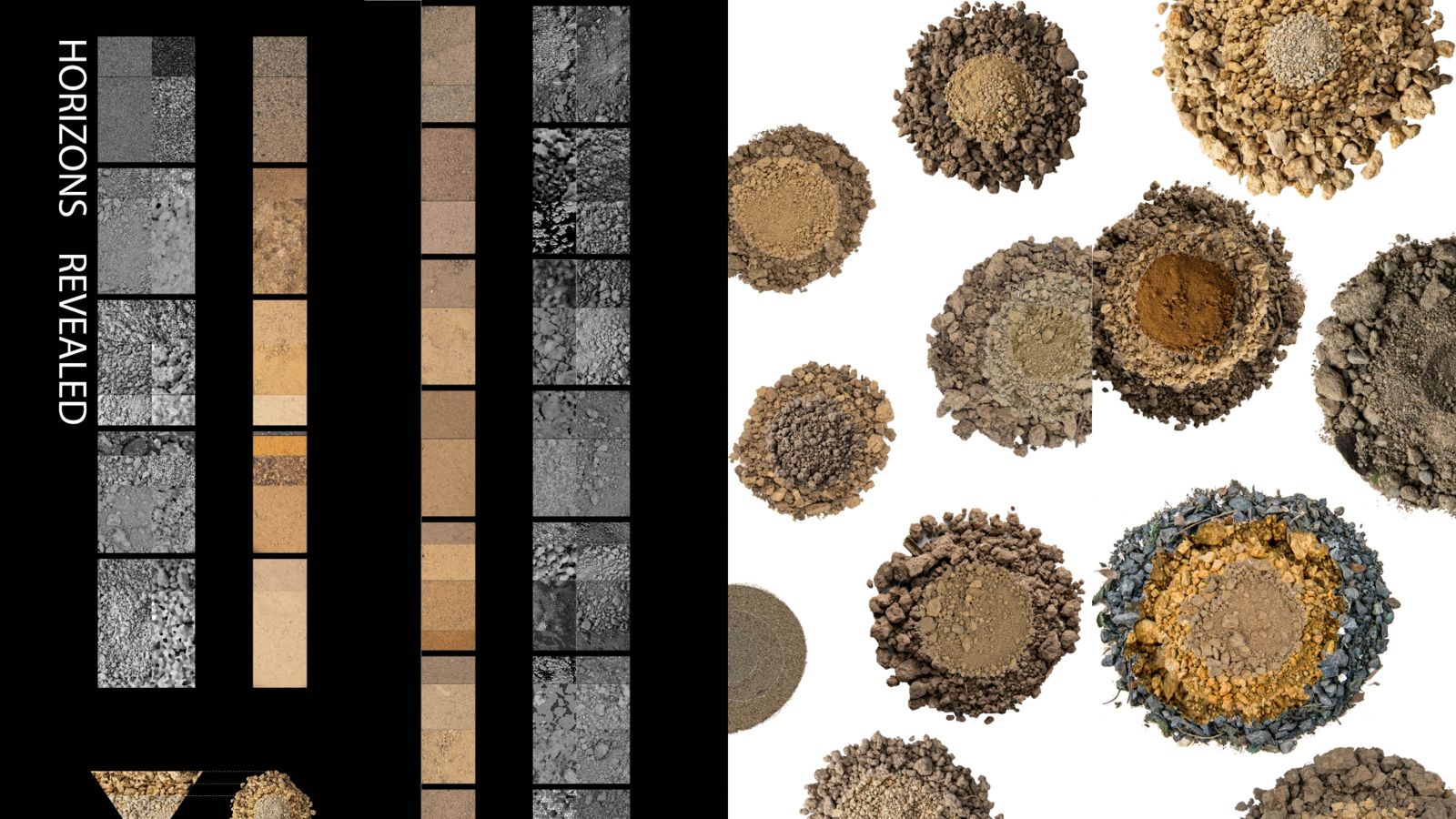Cobblestone Lightboxes—Horizons Revealed
Horizons Revealed is on display in the Cobblestone Park Lightboxes and in the Faculty Window Gallery.

At the core of sustainable design lies its response to a ‘spirit of place’. To be sustainable, we need an architecture that heals the heart, our biological systems, and the environment within which it resides.
This exhibition questions how architecture might be shaped by and for the soil on which it is sited as it explores the conditions of the underground.
The work is part of a research collaboration of architecture and landscape architecture exploring regionalism in New Zealand involving Philippe Campays, Jacqueline McIntosh, Dr. Bruno Marques and Carles Martinez Almoyna Gual.
Taking a series of soil samples from coast to coast in the Wellington region, it takes the viewer into the depths of soil horizons, to reveal not only the colour, but the texture, structure, values and proportions that comprise the unique identity of place.
The exhibition comprises 3 investigations:
- Soil flowers: The coloured fronts of the lightboxes show photographs of soil cones from the earth to reveal the colours and textures and variety of soils sampled from a transept across the Wellington region from coast to coast.
- Soil textures and structure: The black and white reverse sides of the lightboxes remove all pigment from the soils to reveal their values (saturation) and their textures first without modification and then using levels of abstraction.
- The window display in the front of Te Kura Waihanga—Wellington School of Architecture addresses the proportions evident in the soil layers. The façade from a typical New Zealand hotel, designed with traditional proportioning systems has been redesigned to reflect the proportions evident in the soils below in three locations, Raumati, Featherston and Martinborough.
These earthbound spaces are the footholds of the senses, grasping points that stand fast against sweeping forces that are greater than individuals. They posit the potential for an architecture that can create points of sustenance for human beings; uniquely rooted places of nurturing for the future of all.
A complementing part of the exhibition is up in the Faculty Window Gallery visible on Dunlop Terrace. It’s visible from December 2023 until February 2024.
